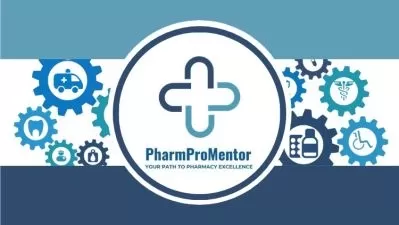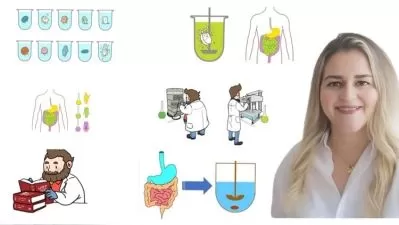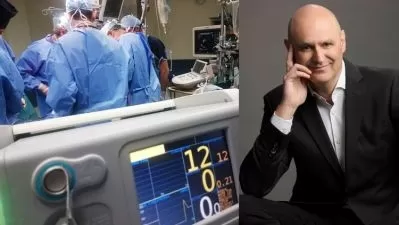Certificate Course in Pharmacovigilance Aggregate Reporting
PV Drug Safety Academy
3:09:21
Description
Aggregate Report Writing, PSUR, PBRER, DSUR, PADER
What You'll Learn?
- Pharmacovigilance Aggregate Reports and Process Flow
- Periodic Benefit Risk Evaluation Report (PBRER)
- Development Safety Update Report (DSUR)
- Periodic Adverse Drug Experience Report (PADER)
- Guidance Lecture on How to Switch from ICSR to Aggregate, Signal and Risk Management Role
Who is this for?
More details
DescriptionThis course is exclusively designed for Pharma students, Medical practitioners and Life science graduates. This course will be helpful to those who have ICSR experience in Pharmacovigilance domain and for those who wants to learn and excel their career in Aggregate reporting.
This Job Role (Pharmacovigilance Aggregate reporting) comes under Niche Skill, which means there is high demand and less resources available in the industry. This is one of the high paying Job Role in Pharmacovigilance/ Pharma domain.
The Trainer of this course has more than 10 years of Pharmacovigilance Industry Experience from different multinational companies (MNC). He has expertise in ICSR, Aggregate Reports, Signal and Risk Management.
In this course we have covered following topics:
Purpose of this Course
Pharmacovigilance and Its objectives
Aggregate Reports & its types
How ICSR & Aggregate Reports are interrelated
Difference between PSUR and PBRER
PBRERÂ and its different sections
DSUR and its different sections
PADER and its different sections
Additional Guidance Session - How to Switch from ICSR Role to Aggregate, Signal and Risk Management Role
By completing this course, you will be more confident to face your interview in Aggregate Reports. Along with main course, we have also shared Additional Guidance sessions on How to Switch from ICSR to Aggregate, Signal and Risk Management Role.
We hope you will find this course very helpful, and you will land your dream job in PV - Aggregate Reports very soon.
Good Luck!!!
Who this course is for:
- Pharmacovigilance ICSR experienced candidates
- Graduate or postgraduate degree in Pharmacy (e.g. B Pharm, M Pharm, M S Pharm, Pharm D)
- Graduate or postgraduate degree in Medicine (MBBS, MD, BAMS, BUMS, BHMS)
- Graduate or postgraduate degree in Life Sciences (BSc, MSc, PhD)
This course is exclusively designed for Pharma students, Medical practitioners and Life science graduates. This course will be helpful to those who have ICSR experience in Pharmacovigilance domain and for those who wants to learn and excel their career in Aggregate reporting.
This Job Role (Pharmacovigilance Aggregate reporting) comes under Niche Skill, which means there is high demand and less resources available in the industry. This is one of the high paying Job Role in Pharmacovigilance/ Pharma domain.
The Trainer of this course has more than 10 years of Pharmacovigilance Industry Experience from different multinational companies (MNC). He has expertise in ICSR, Aggregate Reports, Signal and Risk Management.
In this course we have covered following topics:
Purpose of this Course
Pharmacovigilance and Its objectives
Aggregate Reports & its types
How ICSR & Aggregate Reports are interrelated
Difference between PSUR and PBRER
PBRERÂ and its different sections
DSUR and its different sections
PADER and its different sections
Additional Guidance Session - How to Switch from ICSR Role to Aggregate, Signal and Risk Management Role
By completing this course, you will be more confident to face your interview in Aggregate Reports. Along with main course, we have also shared Additional Guidance sessions on How to Switch from ICSR to Aggregate, Signal and Risk Management Role.
We hope you will find this course very helpful, and you will land your dream job in PV - Aggregate Reports very soon.
Good Luck!!!
Who this course is for:
- Pharmacovigilance ICSR experienced candidates
- Graduate or postgraduate degree in Pharmacy (e.g. B Pharm, M Pharm, M S Pharm, Pharm D)
- Graduate or postgraduate degree in Medicine (MBBS, MD, BAMS, BUMS, BHMS)
- Graduate or postgraduate degree in Life Sciences (BSc, MSc, PhD)
User Reviews
Rating
PV Drug Safety Academy
Instructor's Courses
Udemy
View courses Udemy- language english
- Training sessions 42
- duration 3:09:21
- Release Date 2023/03/06














